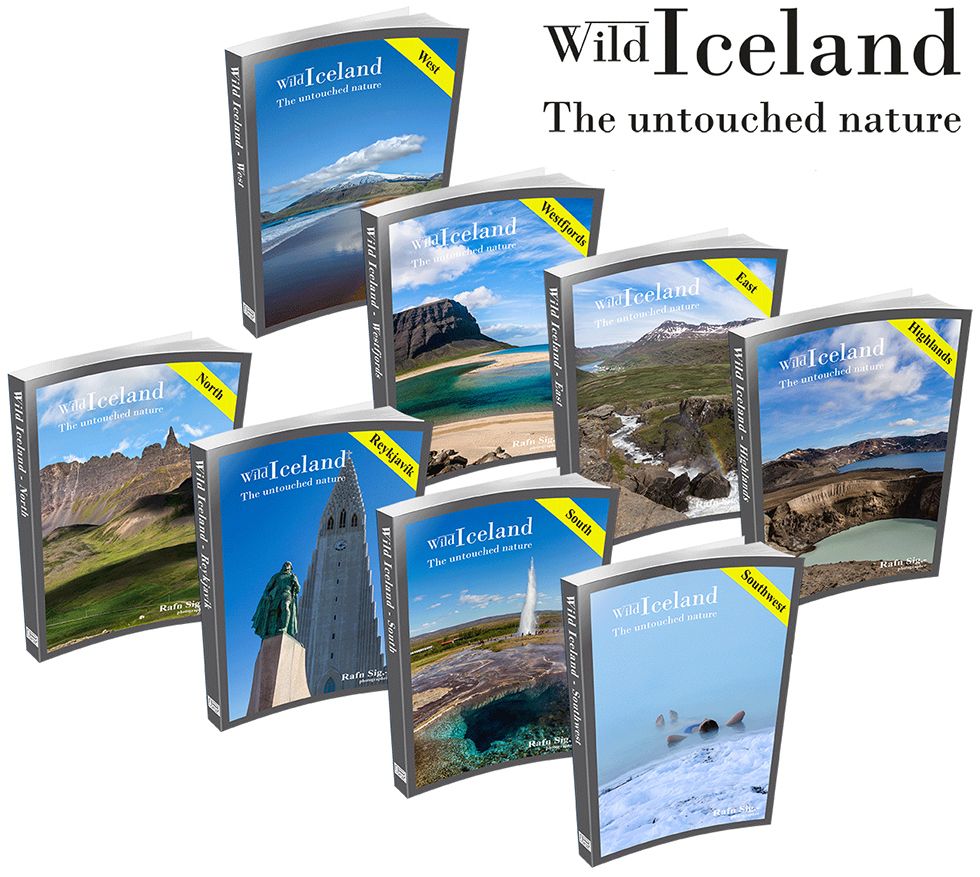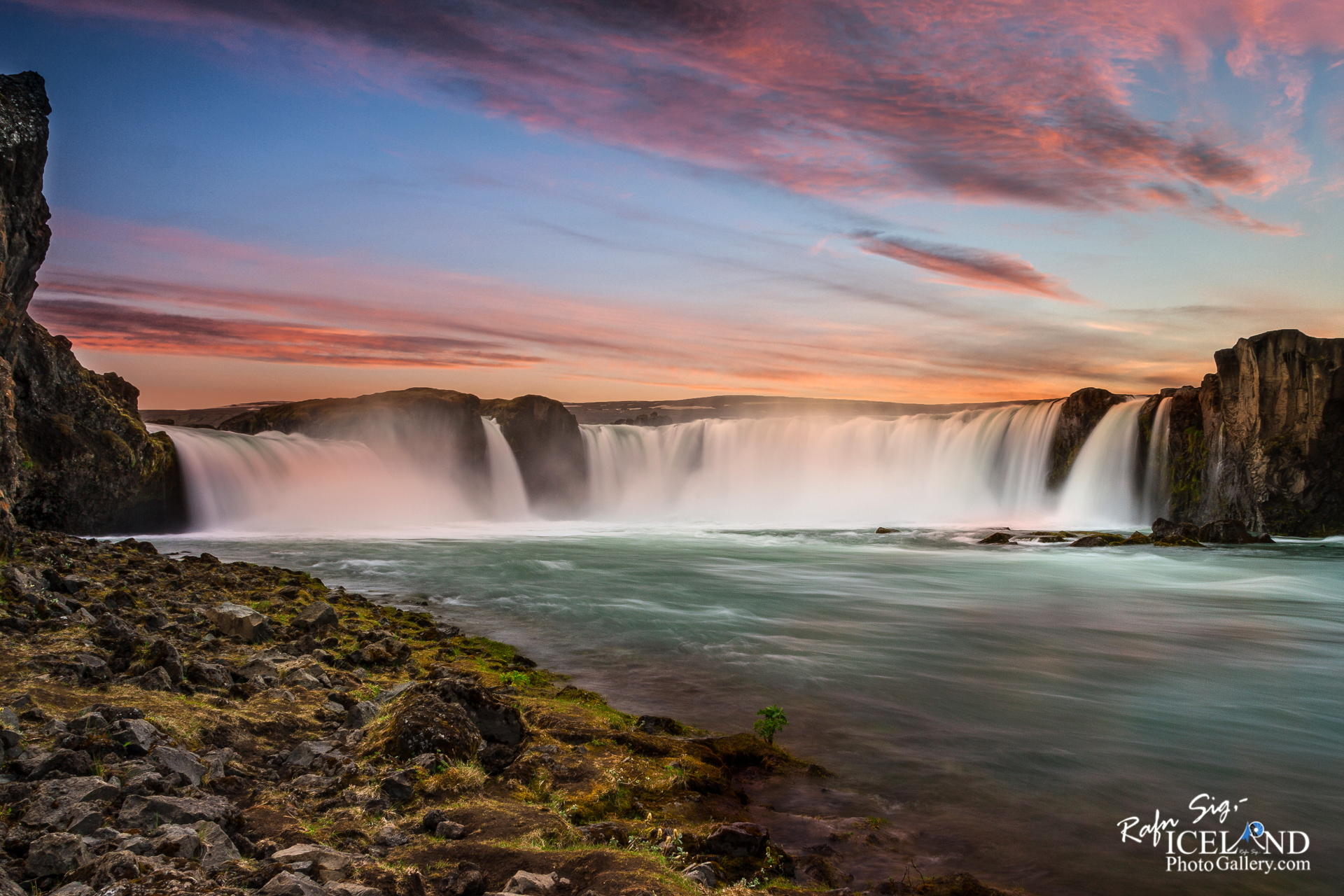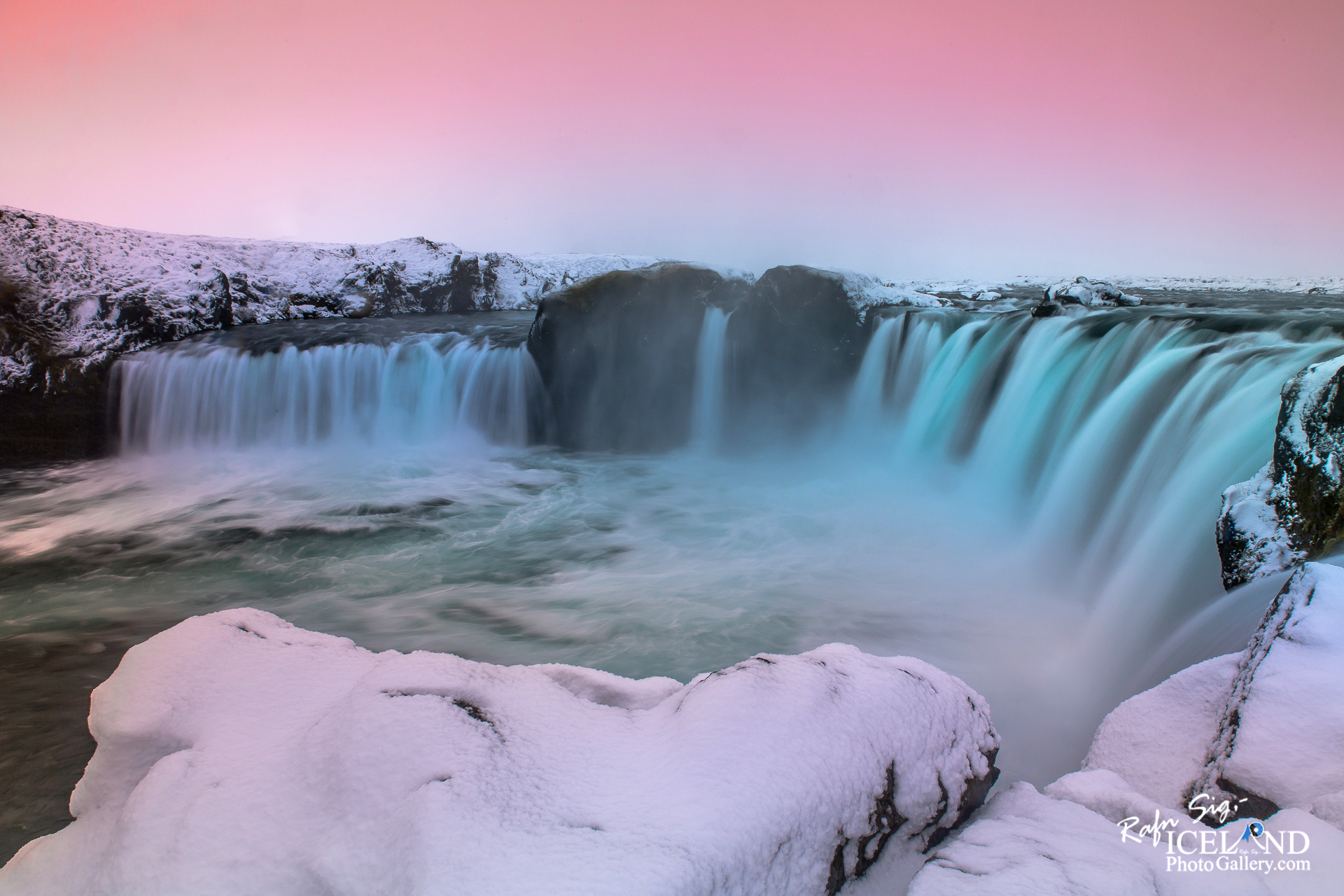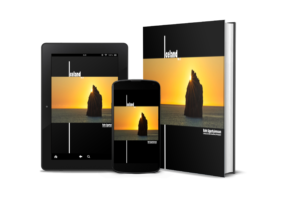2023-01-29
Goðafoss Waterfall │ Iceland Photo Gallery
Documenting Iceland
by: Rafn Sig,-

Goðafoss er foss í Skjálfandafljóti í Bárðardal. Hann er einn af vatnsmestu fossum landsins. Hann greinist í tvo meginfossa og nokkra smærri og fer það nokkuð eftir vatnsmagni árinnar hversu margir þeir eru. Hann er fjölbreytilegur ásýndum eftir vatnsmagni, veðurfari og árstíð og sumum finnst hann ekki síðri yfirlitum í klakaböndum að vetri en í glaðasól að sumri.
Goðafoss er 9-17 m hár eftir því hvar mælt er og 30 m breiður. Bárðardalshraun þekur allan botn Bárðardals allt ofan frá Skafeyrum og niður fyrir Þingey. Gljúfrið neðan við Goðafoss er grafið í hraunið. Um það fellur fljótið straumhart og úfið. Skammt neðan við Goðafoss er lágur foss í gljúfrinu sem nefnist Geitafoss. Landið á vesturbakkanum heitir Hrútey. Hún afmarkast af Hrúteyjarkvísl, sem greinist frá fljótinu ofan við Goðafoss en sameinast því aftur alllangt neðan við foss.
Fosshóll er á bakkanum austan árinnar. Þar er búskapur, verslun og veitingarekstur. Goðafoss er með frægustu fossum á Íslandi og þangað kemur fjöldi ferðafólks til að skoða og dást að náttúrufegurðinni sem þar getur að líta. Fossinn var friðlýstur sem nátturuvætti árið 2020.
Þorgeir Ljósvetningagoði kastaði hinum heiðnu goðum í fossinn eftir að hafa ákveðið að Íslendingar skyldu taka upp kristindóm og hafna heiðnum siðum, svona opinberlega að minnsta kosti.
The Goðafoss (waterfall of the gods or waterfall of the ‘goði’ ) is a waterfall in Iceland. It is located in the Bárðardalur district of Northeastern Region at the beginning of the Sprengisandur highland road. The water of the river Skjálfandafljót falls from a height of 12 meters over a width of 30 meters. The river has its origin deep in the Icelandic highland and runs from the highland through the Bárðardalur valley, from Sprengisandur in the Highlands.
When Iceland was first settled in the 9th and 10th Centuries, the vast majority (who were not slaves, at least) were Norwegians who followed the Old Norse religion, worshipping deities like Thor, Odin, Loki and Freya. However, after the Commonwealth was established in 930 AD, pressure to convert began to push from Christianising Europe.
By 1000 AD, it seemed that Norway would almost certainly invade if the country were to stand by their pagan beliefs. The issue was thus discussed at Þingvellir, where the parliament met once a year. The lawspeaker at the time, the Ásatrú priest (or goði) Þorgeir Ljósvetningagoði, was given the responsibility to make the decision.
It is said he sat beneath a birch for a day and a night in silence, praying to his Old Gods for the right decision. Eventually, he emerged and said, for the good of the people, Christianity would be the official religion, but pagans could practice in private.
To symbolise his decision, he returned to his home in north Iceland and threw idols of the Old Gods into a beautiful waterfall. Since then, it would be known as Goðafoss..
. . . All info at: https://www.patreon.com/RafnSig
You can buy this and other photos at my Icelandic Stock Photo Web: IcelandStockPhotos.com
– 0 –
Viltu styrkja þessa síðu?
Vefsíðan Iceland Photo Gallery er unnin í sjálfboðavinnu. Ef þú hefur áhuga á að styrkja þetta framtak til áframhaldandi uppbyggingar er hægt að leggja inn á:
Reikningsnr.: 0101-26-013169
Kennitala: 310155-4469













